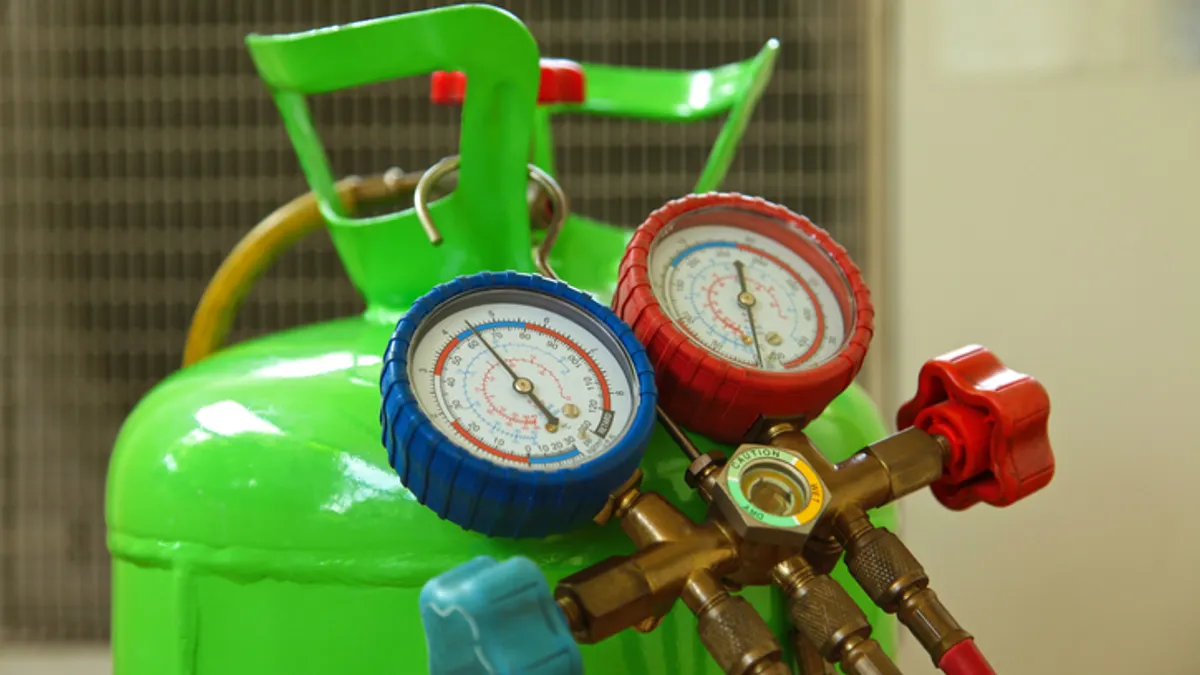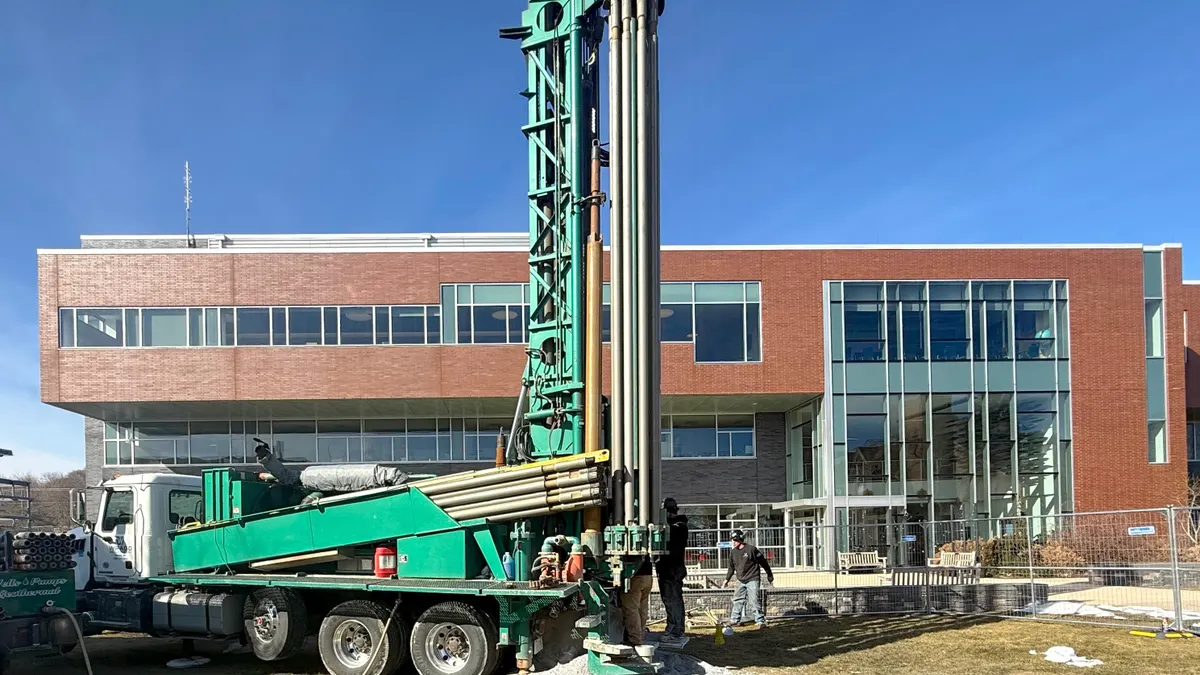Shortages of A2L-compliant refrigerant R454-B are expected to persist through the third quarter, so it might make sense for facilities managers to look at systems that use R-32 or another alternative refrigerant if they’re planning to install an HVAC system this year, some contractors and industry analysts say.
“Countless companies around the globe manufacture R-32,” a Contracting Business report says. “It has been a popular refrigerant outside North America for years and has a well-established infrastructure and supply chain.”
Other A2L-compliant refrigerants include R-454C and R-1234yf.
Like R-454B, R-32 is considered an A2L refrigerant, making it compliant with a requirement in the American Innovation and Manufacturing Act that took effect this year requiring the use of refrigerants with low global warming potential.
A surge in demand for R-454B, which many of the biggest manufacturers have designed their new HVAC systems to use, has led to shortages that have driven up its price and created delivery delays that can stretch for months.
“Industry professionals are struggling to find even a single 20-pound cylinder [of R-454B],” Jorge Alvarez, co-founder of iGasUSA said in a commentary in ACHRNews, an HVAC industry publication. “The cost of refrigerant has surged to $60 per pound, compared to $17 per pound in previous years.… The shortage has already driven up the price of air conditioning units. In 2025, the average cost of a system has risen by $3,000 compared to 2024, and by $5,000 compared to 2017.”
Honeywell, one of the biggest manufacturers of R-454B, said earlier this year it was adding a 42% surcharge on top of other price increases to offset the cost of importing supplies to help it meet demand.
“We have absorbed the bulk of the impact to date in order to support North American growth,” the company said in an April 11 letter to customers. “However, we have reached a point where the cumulative effect of increased costs of raw materials needed to meet demand for 454B is no longer sustainable without affecting reliability and the services we provide.”
Carrier, Trane and Lennox are among the manufacturers who’ve adopted their new HVAC systems to use R-454B.
By some estimates, the shortages are expected to ease by the third quarter. Facilities managers that have to make a decision before then on what HVAC system to install might consider a system that’s R-32 compatible, Arizona-based HVAC contractor Aristotle Air says in a customer information sheet.
“Brands like Daikin, Amana, and Goodman use R-32, which is readily available at half the cost of R-454B,” the information sheet says.
Congress could be stepping in soon with its own remedy for the shortage. Rep. Neal Dunn, R-Fla., and Sen. Roger Marshall, R-Kansas, have introduced resolutions calling for lawmakers to disapprove the Biden-era rule that mandated the use of A2L refrigerants as part of the federal government’s climate change policy.
“Congress [should disapprove] the rule submitted by the Environmental Protection Agency relating to “Phasedown of Hydrofluorocarbons: Management of Certain Hydrofluorocarbons and Substitutes Under the American Innovation and Manufacturing Act of 2020,” the resolutions say.
As resolutions, they only need a simple majority to pass and don’t require signature by the president. Both are in committee.
“We urgently call on Congress to act and remove the Technology Transitions rule under the AIM Act,” Alvarez said in his ACHR News commentary. “Without swift legislative intervention, the U.S. air conditioning industry will continue to … bear the brunt of decisions made in haste and without consideration to the logistics of implementation.”












